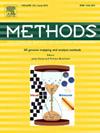PhosBERT: A self-supervised learning model for identifying phosphorylation sites in SARS-CoV-2-infected human cells
Abstract
Severe acute respiratory syndrome coronavirus 2 (SARS-CoV-2) is a single-stranded RNA virus, which mainly causes respiratory and enteric diseases and is responsible for the outbreak of coronavirus disease 19 (COVID-19). Numerous studies have demonstrated that SARS-CoV-2 infection will lead to a significant dysregulation of protein post-translational modification profile in human cells. The accurate recognition of phosphorylation sites in host cells will contribute to a deep understanding of the pathogenic mechanisms of SARS-CoV-2 and also help to screen drugs and compounds with antiviral potential. Therefore, there is a need to develop cost-effective and high-precision computational strategies for specifically identifying SARS-CoV-2-infected phosphorylation sites. In this work, we first implemented a custom neural network model (named PhosBERT) on the basis of a pre-trained protein language model of ProtBert, which was a self-supervised learning approach developed on the Bidirectional Encoder Representation from Transformers (BERT) architecture. PhosBERT was then trained and validated on serine (S) and threonine (T) phosphorylation dataset and tyrosine (Y) phosphorylation dataset with 5-fold cross-validation, respectively. Independent validation results showed that PhosBERT could identify S/T phosphorylation sites with high accuracy and AUC (area under the receiver operating characteristic) value of 81.9% and 0.896. The prediction accuracy and AUC value of Y phosphorylation sites reached up to 87.1% and 0.902. It indicated that the proposed model was of good prediction ability and stability and would provide a new approach for studying SARS-CoV-2 phosphorylation sites.

 求助内容:
求助内容: 应助结果提醒方式:
应助结果提醒方式:


